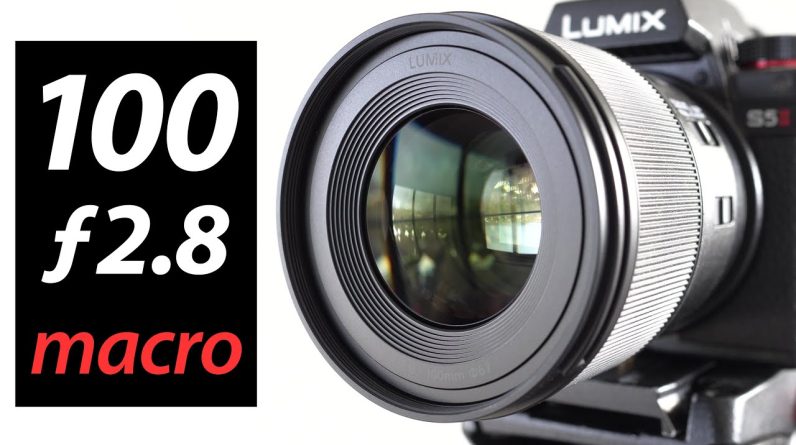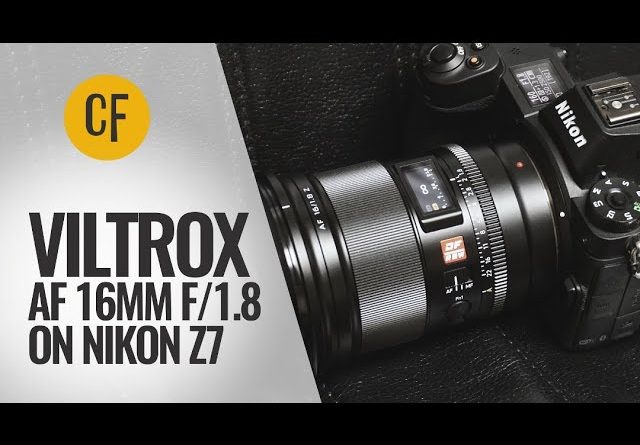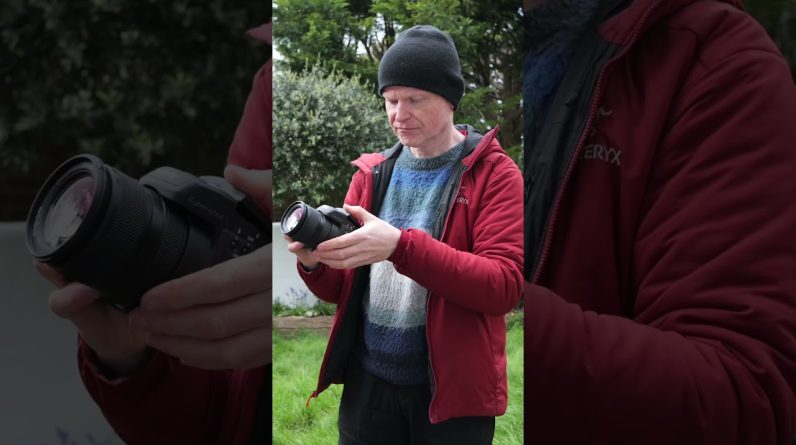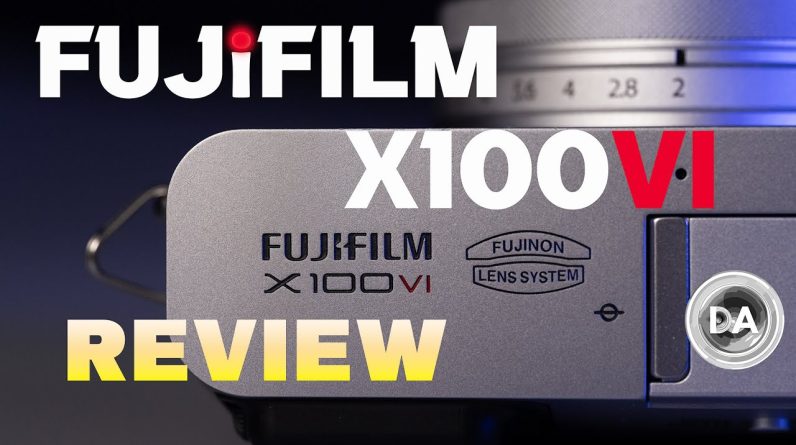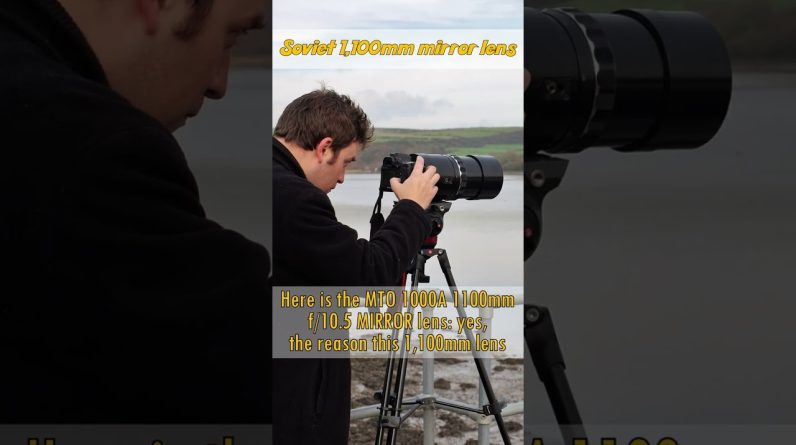[Music] Hi I'm Dustin Abbott and I'm here today To give you my video review of the Sony Fe6 to35 mm f2.8 G master and this is The second generation or Mark 2 of that Lens now the original 1635 f2.8 GM was Released in 2017 where it completed the Trinity of fast professional grade zooms Along with the 24 to 70 and 70 to2 200 Mm F2 2.8 zoom lenses in the years that Have passed however Sony's ability to Really design and execute lenses has Dramatically improved and so they're in The process of updating some of their Earlier GM lenses which is includes this Trinity in 20121 they released the 70 To2 200 uh G Master Mark 2 lens the 24 To7 D in 2022 and then in 2023 the 16 to 35 mm so Sony has had a few goals with These updated versions of their lenses And they can be summed up I think Basically in four parts they are to be Smaller and lighter they are to be more Featur they're to have better autofocus And they're also to have better image Quality I believe that Sony has achieved All of those objectives with the new 16 To35 mm f2.8 GM Mark I but all of that Of comes at a price the lens retails at Nearly $22,300 so the question is is it Worth it well that's what we're going to Explore right after a word from our Sponsor today's episode is brought to You by Phantom wallet the minimalist
Modern wallet that is now even better With the new Phantom X that is crafted From aluminum right here in Canada it is 22% smaller and 35% lighter while still Making it easy to access your cards and Money when you need them thanks to their Unique Fanning mechanism You could even customize your wallet due To its modular design with accessories Like a money clip cash holder ID display And even chipolo and air tag tracking Integration visit store. fanom Wallet.com to check out their unique Sizes Styles and finishes that span from Aluminum to Wood to carbon fiber and use Code Dustin 15 for 15% off when you're Ready to check Out so to give you an idea of how the Review is going to work I'm going to Give you a breakdown of the build and Handling of the autofocus and video Performance I'll give you an overview of The image quality and then after my Summation if you want a deep dive into The optical performance you can jump Right into that it will come at the end Of the video or you can jump ahead via The timestamps below now when it comes To the build and design as noted this Lens is smaller and lighter than its Predecessor it's 87.8 mm in diameter 3.5 In and it is 111.5 mm in overall length that's 4.4 in So while the diameter is the same it is
A full 10 mm shorter than the previous Generation lens and that definitely Affects the overall weight this weighs In at 547 G gam or 1.2 lbs which is 133 G lighter than the previous generation Lens and to give you some perspective Canon's RF 15 to 28 mm f2.8 weighs in at 840 G and so we're talking about you Nearly 300 G more heavy than what this Lens is you're really going to notice That out in the field we retain an 82mm Pront filter thread and it comes with a Very slim design lens Hood as well this Is a thoroughly weather sealed lens Weather sealing has improved some Additional seal points I count 15 Different seal gaskets in here plus a Flooring coating on the front element in Addition when it comes to the feature Side of things is that we now have an Aperture ring with all the various GM Ways of controlling that and so you can Use it clicked you can use it dclick With a switch down on the right side of The barrel and you also have an iris Lock here on the left side that will Either lock you in or out of the Aperture ring if you're not a fan of Using a manual aperture ring I do like The Precision where you can choose Either the 1/3 stop you clicks that are Very very well defined but the moment You switch it into the dclick version All of a sudden that those go right away
And you can very smoothly rack through It for video purposes they have added an Additional Focus hold button to the Design so there's now one on the top of The barrel so if you're shooting in a Ver vertical orientation there's one Handy there the original position is Also retained along with the AF MF Switch that was there you will find that When you zoom the zoom action is very Very nicely damped and it's very smooth You'll see that there is just a little Bit of a zooming out actually at the 16 Mimer uh point in the zoom range and it Is fully retracted at 35 mm and so at 16 Mm the extension by measure my Measurement is only about 8 mm it's very Slight slight enough that I think you Can throw it on a Gimbal and you can go Throughout the zoom range without the Balance changing and so that you can Continue to use it without having to Re-calibrate now another significant Improvement here is that the minimum Focus distance has been reduced down to Just a hair over 22 cm and that gives You now a 0 .32 times magnification at 35 mm that's versus the 0.19 times Magnification on the previous generation Lens so as you can see you can now get a Very high degree of magnification and You can see why you can get very close At 16 mm there is a pretty significant Difference in the amount of
Magnification at 16 mm versus what you Get at 35 mm that ability to get close And to really uh have high magnification Allows you more potential to just take Different types of shots you know ones Where you can actually blur out a Background despite this being a wide Angle zoom lens so as we come to expect From the modern G Master designs this Lens is very well executed they managed To make it very featur while also Reducing the size and the weight and That's a pretty impressive Achievement autofocus is similarly Improved where we had two Focus Motors Not as good as the current Motors either But two Focus Motors in the first Generation lens we now have quad that's Four extreme Dynamic XD linear Motors Here and autofocus is everything that You could ask for it is completely Silent even when I put my ear up next to It it is extremely fast a fast enough That it's designed to to work with Either high-speed burst like on the Alpha 1 or the a93 but also if you're Shooting video at 4K 120 it's going to Keep up with that action and allow you To have just that brilliantly just Perfect autofocus you can see in my test That Focus transitions are instant Essentially they're instantaneous you Just go from one subject to another with No spooling or lead up no settling it
Just boom one to the other moves very Very quickly it also does a good job of Tracking the eye and one thing that I do Note that Sony does really well at this Point is that when you look at shots say The shot of Nala you can see that the Focus is actually on the iris it's not On the you know the eyelash it's not on The eyelid it's on the iris itself and That is just beautifully executed now on The video side of things I found that Video Focus pools were really well Executed they are smooth and confident There's no visible steps there's no Settling or pulsing or anything like That and while there's obviously tons of Focus speed available in the focus Motors Sony has damped it to the way Where there still I think is a Reasonable cinematic quality even though The the transitions are fairly quick You'll also see that Focus breathing is Very low not an issue at all and of Course with the appropriate Sony bodies You can minimize that even further with The focused breathing compensation and You'll be able to do that with very Minimal crop because there's just not a Whole lot there to begin with I also Found that my hand test was just perfect The transitions back and forth between The hand to the eye you can see that They're confident they happen quickly There's no hesitation or lag before
Focus begins it just does the job and Because there's low Focus breathing There's nothing abrupt or jarring in Transition between those two Focus Points I also found just in shooting a Little bit of basketball action that you Can see that Focus has no problem Keeping up with the subjects helps of Course that depth of field is so big With wide-angle lenses but nonetheless There's no jumping around nothing Discordant you just got the action Captured the way that you would want so Autofocus is excellent here similarly Image quality is improved and is Excellent you can see that the MTF Charts are really fantastic fantastic I Don't know that I've hardly seen a Sharper Center and mid-frame performance From a wide angle lens of any kind Before so that is really really Impressive there is a significant Improvement at 35 mm in particular Compared to the first generation lens Now here's the quick breakdown of Optical performance and you can get the Deep dive following the summation here There is some complex Barrel Distortion At 16 mm at 24 mm in the middle of the Zoom range there's basically no Distortion there is a bit of pin cushion Distortion though nothing significant on The telephoto end vignette is pretty Well controlled all throughout the zoom
Range in particular after 16 mm and by The time you get to 35 millim there's Basically only about a stop of vignette There so nothing significant I also Found that longitudinal and lateral Chromatic aberration are essentially Perfectly controlled this shot of these Kind of dried you know winterized plants Shows just how how precise focus is but Also that there's just no fringing That's marring the edges and you can see Also that at the edges of my test chart There are no lateral chromatic Aberration there resolution at 16 mm is Pretty much Perfect all across the frame Very very high levels everywhere that You look you will find that performance Is close maybe not 100% there but Probably 98% there at both 20 and 24 mm Very slightly softer at 28 mm with a Little bit of a rebound at 35 mm uh However in the center of the frame in Particular when I'm doing up close shots I was really impressed by how sharp the Lens was at 35 mm you'll also find Because you can get close and blur Things out that the bouquet quality is Pretty decent from the lens for a wide- Angle Zoom I also found that there was Good geometry with specular highlights That there's very little uh deformation You can see at the top of this image it Stays quite circular right close to the Edge flare resistance was essentially
Flawless I didn't see any kind of loss Of contrast no ghosting artifacts it Just did a great job and similarly I Also found that coma performance was Quite good with uh no real coma smear in The corners of the frame when I shot the Night sky in summation this is the best And most consistent wide-angle Zoom that I've tested since the 12 to 24 mm F2.8 unlike that lens however this lens Is you know smaller and cheaper and you Know a little bit less extreme not Everyone needs something going as wide As 12 mm so you know this lens is a Little bit more conventional you can use You know Screw on filters all of that And so if you're looking for just a Really really good wide angle Zoom this Is going to be it it is very expensive At $2,300 so there are cheaper Alternatives but essentially this is the Lens to get if you want the absolute Best and if you're a person that is Completing a new Trinity of zoom lenses And you've got the 24 to 70 and the 70 To 200 this is a perfect complement to Those lenses it is a professional grade Lens for those who want the very Best I'm Dustin Abbott and if you look In the description down below you can Get more information by taking a look at My text review there's an image gallery There along with the typical buying Links if you'd like to purchase one now
If you want a deeper dive into the Optical performance stay with me for our Image quality Breakdown [Music] So our examination starts off with what Is basically about the only Optical flaw That I can come up with and that is that There is some complex Barrel Distortion At 16 mm you can see if I try to just Manually correct it inside here and get The line straight end up warping the Edges of the frame fortunately the Correction profile does a much better Job but we have got A plus 24 to correct To this degree and then a plus 33 in Vignette so just a little over a stop of Vignette in the corner vignette being Pretty much a non-issue now fortunately The correction profile does a much Cleaner job in dealing with that Distortion it's not perfect but you can See it does quite a good job now at 24 Mm there's basically no Distortion to Correct and only a minimal amount of Vignette about one stop in the corner Using about a little over plus 30 is Plenty to correct that as you can see Here by 35 millimeters we have a little Bit of pin cushion Distortion a minus Four to correct but vignette is at its Lowest point basically less than one Stop in the corners so completely a Non-issue I believe that this image does
A great job of showing how minimal the Longitudinal chromatic aberration is you Can see there's lots of potential for Fringing here but it's completely Perfectly controlled thus we have really Really sharp delineation at the edges Making for really great looking images This image I think looks good on a Global level but when you pop into a Pixel level here on a 61 megapixel Sensor you can really appreciate just How nice that is now we've already Commented on the geometry how nice of That is on the bab but if we take a look At this shot we can see that there's Lots of shiny surfaces here no fringing On those and then as we look towards the Specular highlights there is no fringing Around them either only negative I can Point to is a little bit of busyness a Little bit of what you might call an Onion bokeh in the uh center of the Specular highlights likewise lateral Chromatic operations are really well Controlled you can see here that in all Of these transitions from black to white Here at the edge of the frame there is No fringing to be seen there so the Strong control of aberration sets us up For the potential for a very strong Contrast very detailed performance and Here even showing at 200% on 61 Megapixels we can see that that perfect Or that Center is perfect that contrast
Is off the charts detail is fantastic Mid-frame similarly looks very very Strong and as we come down towards the Corners we can see still at this point We've got very high resolution and then Right towards the edge of the frame only In maybe that last little bit is there Any kind of drop off but overall very Very strong performance so for a bit of Perspective I thought it'd be Interesting to take a look at the vro 16mm f1.8 a lens I reviewed earlier in The year but one that I was Exceptionally impressed with and how Well it held up so here we can see if we Compare both of them at f2.8 there's no Question that the GM lens is the winner In the center of the frame it looks Fabulous and the vro is very very good But the GM lens is better now in the Mid-frame it's a little bit more of a Tossup I would argue that maybe the vro Has very slightly more contrast if we Look down in this Zone however I would Say that the GM lens is a little bit Better looking up into this area Definitely better for the GM but if we Go up to this corner it's the vro looks Better we pop down to this side and Again I would say particularly as you Look towards the edge of the frame the Vrox is a little bit better so what We're seeing is some definite give and Take depending on where you look with
The corners I would say favoring the Viltrox lens now the GM lens is one of The very rare wide-angle lenses that can Produce a credible landscape image right From f2.8 so you can see here looking Across the frame this is 16 mm f2.8 That's a great looking image and if we Punch into a pixel level you can see That the detail is amazing in the center Of the frame but looking over here Detail is also exceptional right off to The edge of the frame depth of field Means that this front corner is not Quite sharp but as soon as we get into The place where the lens is in Focus we Can see the detail and contrast just Looks pristine now when you start off at Such a high level there's only so much Room for improvement so what I'm Primarily seeing as you stop down to F4 And f5.6 is you can see that contrast is A little bit better mostly in the form Of the bright being a little bit Brighter you're going to see maybe a Little bit more Improvement here in the Midf frame and a little bit in the Corners but for the most part we're Already at such a high level there's Just not much more to ask for so here's A real world shot at f5.6 and you can See that basically anywhere you look in The frame the detail is perfect there's Just there's really no flaws to point to Everything is just handled really
Exceptionally well contrast looks good You can see that color saturation is Really beautiful the word pristine keeps Coming to mind it kind of Suits the Scene but it also suits the image Quality there image quality stays at an Extremely high level through f8 but on This high resolution body after that Point defraction will slowly start to Creep in to where the by the time you Get to our minimum aperture of F22 you Can see the image has been significantly Softened by the effects of defraction Now if we compare 16 mm to 20 mm we can See in the middle of the frame that There really hasn't been anything lost That 20 mm looks every bit as good in The mid-frame I would argue that 20 mm Looks a hair better but in the corners Uh there's an advantage for 16 mm There's plenty of resolution though even Shooting at 20 mm here in the gym I Could you know get shots under even more Dim conditions and everything just looks Really really great detail looks awesome So I'm able to freeze motion there and Get a shot even in the midst of a burst It looks great now if we move on and we Take a look at 24 millim and then at 28 Mm we can see that at 24 mm we're at a Similarly high level to what we've seen Just a very mild fade at 28 mm it's Close it's just not quite as pristine in The mid-frame however I would say that
28 mm looks every b as good as 24 mmm But down in the corners we can see that The lens is isn't quite as sharp as what We've seen and I would say in this Mid-frame area that 24 mm shows a little Bit more than what 28 mm does over here On the left side you know a roughly Similar but you can see just a little Bit more contrast in the hair and some Of the texture information here at 24 mm A real world shot in this range looks Just fantastic and as you can see as we Pop in and look at our subject that We're focused on detail is just Intensely good contrast is Fant Fantastic just a very very strong Performance so probably second only to 16 mm in importance is 35 mm and we can See here in the middle of the frame that Performance is still very strong not as As exquisitely good as that 16 mm but Really really impressive by any measure Mid-frame similarly looks really really Excellent it's only when you get down Towards the corners that you could see a Little bit more of a drop off than what We did at 16 mm now this shot of Nala is 3 5 mm f2.8 we talked about it earlier In terms of the context of focus but I Wanted to give you a look at just how Exquisite the detail is here when we are Focused in and uh you know it's not only Is focus nailed but there is just great Contrast and detail shown there and in
This area where you're seeing the Reflection in her eye of myself and the Window light behind you'll see that There's no fringing in there it looks Just perfect so likewise the high degree Of magnification you can achieve can Allow you to really really blur out a Background as you can see here now Obviously that's only going to happen at 35 mm f2.8 and when you are near minimum Focus distance however going out a Little bit further and so a little less Advantageous you can see here with a Busier background there is some edging That is there but overall the scene is Relatively soft and here in this shot You know there is a little bit of Outlining of some of the specular Highlights but overall I would say the Quality of the blur is relatively soft There and again as you punch in you can See there's just a great amount of Detail and contrast in these textures Here now finally if we look at the Overall flare resistance you can see That wide open panning back and forth There's basically nothing to see there's No flare artifacts no loss of contrast And if we switch to a small aperture About f11 we can see that again it still Is retaining quite strong contrast and Very minimal flare artifacts against a Bright Sun all right well if you've made It all the way through through the image
Quality breakdown thanks for staying Tuned to the very end as always thanks For watching have a great day and let The light [Music] In

